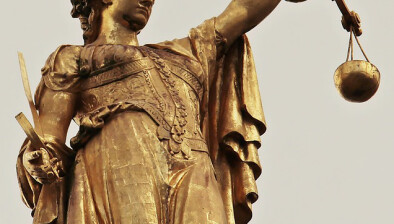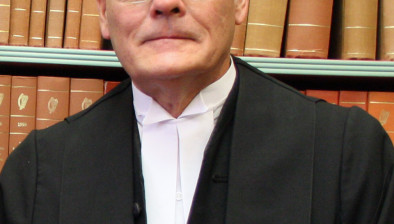Supreme Court: HSE and labs’ appeal dismissed in Ruth Morrissey cervical smear case
The Health Service Executive, Quest Diagnostics Incorporated, and Medlab Pathology Limited have lost a Supreme Court appeal against a High Court judgment in favour of Ruth Morrissey arising from the misreading of her cervical smear tests.

About this case:
- Citation:[2020] IESC 6
- Judgment:
- Court:Supreme Court
- Judge:Mr Justice Frank Clarke
Mrs Morrissey was not told until 2018 that a review carried out in 2014 showed smears taken under the CervicalCheck screening programme in 2009 and 2012 had been incorrectly reported. Her cancer returned in 2018. She now faces a terminal diagnosis.
Background
At trial, Mr Justice Cross made an award in Mrs Morrissey’s favour of €2,152,508 against all three defendants and an additional sum of €10,000 in nominal damages as against the HSE in respect of its failure to notify her of the results of the audits of her earlier smear tests. This was ‘leapfrog’ appealed to the Supreme Court.
The HSE argued that Mr Justice Cross’ finding that individual screeners must have absolute confidence before passing a test as negative had far-reaching consequences, and that it would affect cancer screening services and medical diagnoses generally.
Chief Justice Frank Clarke noted that question in the case was what the professional duty in screening should be and whether it was proven that the actions of any of cervical screening professional had fallen below the reasonable standard that they should have applied. The court was told that UK professionals in this field apply a standard of “absolute confidence”.
The Supreme Court held that the High Court was correct in applying a standard for screening where screeners should have no doubt that a sample is adequate, and that it doesn’t contain any suspicious material, before stating that it is clear.
The Chief Justice said: “Given some of the ‘doomsday’ predictions which followed on from the judgment of the High Court in this case, I do feel it necessary to say that at least some of the more extreme comments are very hard to reconcile with the fact that there was clear evidence that such a standard is actually applied in the United Kingdom generally and, to the particular knowledge of an important expert witness, in Northern Ireland specifically, without the screening systems in those countries becoming unworkable.”
He said that while witnesses called on behalf of the defendants may have engaged in some “quibbling” about whether the term “absolute” was appropriate, “all of the witnesses agreed that any doubt about whether what is seen on a slide is normal must not allow the case to be reported as a clear result”. He said it was the experts, not the court, who identified the standard expected of a normally competent screener as being one which precludes giving a clear result in a case of doubt.
The Supreme Court judgment in Dunne v NMH remains the legal standard in clinical or professional negligence claims, which is whether no reasonable professional of the type concerned could have carried out their task in the manner which occurred in the case in question.
He said that the trial judge had clearly accepted that it was possible for competent screeners, applying an appropriate standard of approach, to come to different views about whether there was even a doubt as to whether a clear result could be given: “It would, indeed, have been difficult for the trial judge to have come to any different view having regard to the evidence given in respect of the United Kingdom‘s screening programme (which is accepted as being one of the very highest standard), where, notwithstanding those high standards, reviews suggest of a different view to that of the original screener being taken in a significant proportion of those cases where a diagnosis of cancer actually followed.”
He noted that Mr Justice Cross’ finding in respect of the claim for negligence against Medlab relating to the reading of the 2012 slide was proof of the practical acceptance by the High Court of the fact that there could be genuine differences of opinion between competent professionals, even applying a test of “no doubt”. Mr Justice Cross found Medlab negligent in respect of the adequacy issue, but he was not satisfied that it was proven that Medlab was negligent in respect of the manner in which the screener did not identify any suspicious material on the slide in question.
Chief Justice Clarke said this suggested that Mr Justice Cross applied the “absolute confidence” test in a manner that meant the proposition that every error (even with the benefit of hindsight) must result in a finding of negligence was demonstrably wrong. This would “clearly be seen by anyone who had taken the trouble to read the High Court judgment”.
This is a matter that must be reviewed on a case-by-case basis. The most professional screening, carried out to the very highest standards may still lead to different results by competent professionals, and a retrospective review of the screens following diagnosis may also give another result.
The court noted that English and Canadian cases on vicarious liability arise from a desire to ensure, “as Lord Phillips put it in Catholic Child Welfare Society, that, insofar as it was fair, just and reasonable, liability for tortious wrong was borne by a defendant with the means to compensate the victim”. Mr Justice Clarke was not convinced that, “laudable as that aim may be”, such analysis assists the determination of the boundaries of vicarious liability.
Conclusion
The Chief Justice held that Mr Justice Cross was incorrect to hold that the HSE was vicariously liable for the negligent acts of the laboratories. However, the HSE had a “non-delegable duty”, which he described as a “potentially developing area of primary liability” in respect of patients availing of CervicalCheck. The central appeals were dismissed.
The court allowed Medlab’s appeal over damages awarded to Paul Morrissey to account for services which would have been provided to the family by Mrs Morrissey were it not for her shortened life expectancy. The law in this area may be “potentially anomalous” in certain respects but that is a matter for the Oireachtas.











